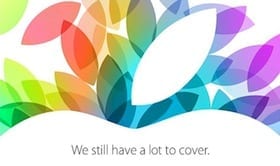 Apple announced about a week ago that they still had “a lot” to cover with today’s special event. And they weren’t kidding. Plenty of new hardware was unveiled alongside new software with OS X Mavericks, and iLife and iWork updates.
Apple announced about a week ago that they still had “a lot” to cover with today’s special event. And they weren’t kidding. Plenty of new hardware was unveiled alongside new software with OS X Mavericks, and iLife and iWork updates.
As usual, Apple CEO Tim Cook took the stage first and discussed the success of the recently released iPhone 5S and 5C models as well as iOS 7, iTunes Radio and the App Store. But the main focus at today’s event was showing off several new products and new software across Apple’s iPad and Mac lineup.
Check out below for what was unveiled:
Mavericks
Announced at the WWDC keynote, OS X Mavericks is finally ready to go and made available for download today. And there’s more than just a new naming convention with this iteration. But standing above all of the new features and technology behind Mavericks was the pricing bombshell that was dropped; OS X Mavericks will be a free download for users. That’s right: Free. This even goes for users that will be upgrading from Snow Leopard. Apple clearly aims to get as many users as possible upgraded as quickly as possible to the new operating system. And Craig Federighi stepped to the stage to talk about Mavericks and all of its new features, many of which were covered back in June:
Compressed Memory: This is a new memory management feature that Apple says will compress data while in use almost instantly, so you can store more data without increasing your RAM. With Compressed Memory, you’ll be able to run more apps without a slowdown.
Integrated graphics: Mavericks will intelligently allocate more or less video memory to graphics as needed.
OpenCL Support: OpenCL in OS X Mavericks supports Intel HD Graphics 4000, Intel HD Graphics 5000, and Intel Iris Pro integrated graphics processors.
Multiple Displays: This allows access to menus and the Dock on different screens, making full-screen apps much easier to work with on multiple display setups. Have multiple app windows running on either display or run an app full screen on each one. You can even use AirPlay and Apple TV to wirelessly turn your HDTV into a fully functional display.
Finder Tabs: You’ll finally be able to open tabbed windows when using Finder. The simple but useful feature will help you organize your desktop. Files can be placed from one tab to another simply by dragging and dropping.
Notifications: Notifications made its debut in OS X Mountain Lion but has been tweaked in Mavericks, allowing for more interactivity. One-click interactivity should help make notification much more intuitive and useful for OS X. Your Mac will also sum up notifications you’ve missed while away from your computer.
Tags: Searching and organizing your files should prove to be an easier task with the Tags feature. It’s pretty simple. Just tag files you want grouped together with a unique name, and when you search that tag name in Finder, it will bring up the group of files together.
iCloud Keychain: iCloud keychain works similarly to the Keychain app already on your Mac – just via your iCloud account instead. This one is for those among us that can’t remember the 20 different passwords we have for 20 different accounts.
Safari: Safari gets the typical performance and functionality upgrade with new power-saving technologies. One cool new feature is Shared Links, which lets you see links posted by people you follow on Twitter and LinkedIn in the new Safari Sidebar.
Calendar: Calendar gets a bright new refresh, ditching the faux leather look of old. The new event inspector will even take a peek at what you have approaching and show travel time estimates and even weather forecasts for that date.
iBooks: iBooks has been strictly an iOS app since its 2010 release but now makes its desktop debut. Books that you download in iOS will also automatically appear in iBooks on your Mac, so you can pick up where you left off.
Maps: Not much to see here. Basically this is just an OS X version of the iOS Maps application with Multi-Touch gestures.
Mavericks Compatibility:
- iMac (Mid 2007 or newer)
- MacBook (Late 2008 Aluminum, or Early 2009 or newer)
- MacBook Pro (Mid/Late 2007 or newer)
- MacBook Air (Late 2008 or newer)
- Mac mini (Early 2009 or newer)
- Mac Pro (Early 2008 or newer)
- Xserve (Early 2009)
Software
iLife and iWork were also given new versions for Mavericks and iOS, available today. The apps were given a cleaner, simpler design with performance boosts as well a bevy of new features. The new iLife and iWork programs are also now 64-bit.
MacBook Pro
The MacBook Pro with Retina display also got an expected refresh with new Haswell-based models in both 13 and 15 inches. The new models will deliver Iris graphics with a 90% increase in performance over the previous generation with nine hours of battery life in the 13 inch model and eight in the 15 inch model. The new models also feature faster PCIe SSDs, faster WiFi and Thunderbolt 2 ports while coming in at a price point lower than their predecessors.
Pricing and Availability:
- 13 inch – $1,299 (base model)
- 15 inch– $1,999 (base model)
Both models are available today
MacBook Pro (non-Retina model)
Apple has officially eliminated the 15 inch model of the non-Retina MacBook Pro from its lineup. Remaining is only the 13 inch model, leaving it as the only option for those not wanting the more expensive flash storage or those still wanting a built-in optical drive.
Mac Pro
While it’s not yet available, the long awaited new Mac Pro’s release day is near (as long as you consider “before the end of the year” near). Apple showed off its new cylindrical powerhouse that features up to 12-core Xeon CPUs and up to 64GB of user-accessible DRAM and 1TB flash storage. The Mac Pro, of course, features six Thunderbolt 2 ports as well as four USB 3.0 ports. And even with all of this power, Apple claims the built-in-the-U.S. machine is as quiet as a Mac mini and uses 70% less power than the previous generation Mac Pro.
Pricing and Availability:
- $2,999 – Base model, with an upgrade option beginning at $3,999
- Available in December
iPad Air
With its first major refresh since the 2011 iPad 2 form factor or the 2012 Retina display addition, the 9.7 inch iPad got a major overhaul. And a new name. The iPad Air replaces the aging form-factor of its predecessor, while trimming some of the fat. Weighing in at just one pound, the iPad Air is thinner, lighter and more powerful than any 9.7 iPad that came before it. The iPad Air’s bezel is 43 percent thinner and its profile is 20 percent slimmer at just 7.5mm. The iPad Air gets 64-bit architecture and the same A7 processor as the iPhone 5S and its M7 motion chip. You’ll also get the standard graphics, WiFi performance and camera upgrade with the iPad Air and expanded LTE support from international carriers. However, one feature that didn’t make its way to the new iPad from the iPhone 5S is the Touch ID fingerprint sensor.
Pricing and Availability:
- Like previous models, pricing for the iPad Air begins at $499
- Available in silver or space gray beginning Nov. 1.
iPad 2
Apple has surprisingly decided to keep the iPad 2 as part of its lineup as the cheaper model full-sized iPad. The iPad 2 remains $399.
iPad mini with Retina display
The iPad mini received a major update today with the addition of a Retina display (2048 x 1536 resolution). The mini also gets the A7 processor that will bring up to a 4X boost in performance without deviating from the 10 hour battery performance point we’ve come to know and love. The cameras and WiFi also see an upgrade in the mini, which unlike its big brother, retains the same design.
Pricing and Availability:
- Pricing begins at $399
- Available later in November
iPad mini (non-Retina)
Like the 9.7-inch iPad, the mini will keep the cheaper non-Retina model on board.
Not Announced
Despite expectations, there was no upgrade to Haswell or otherwise for the Mac mini, or iOS 7.0.3 update. And while we didn’t expect an announcement of the mythical full-fledged TV set, there were murmurs, whispers and all-out rumors of a refresh of the Apple TV, but alas, it was not to be.
Of course, there also was no smartwatch in sight. Apple typically waits until a product is good and ready to release. Indications are that a watch is still in early development, and it would be surprising to see Apple push the release of such a product simply as a reactionary move to competitors’ products. But some of us foolishly got our hopes up – even if just a tiny, tiny bit – that the smartwatch’s time had come.
So, what caught your attention the most with today’s announcements? Were you pleased with the hardware and software announcements, or were you hoping for Apple to break new ground? Let us know in the comments below.



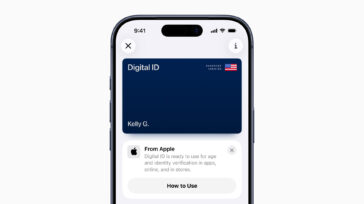
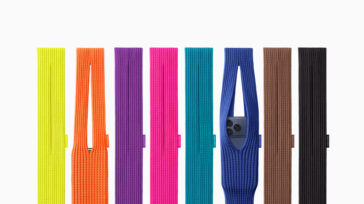
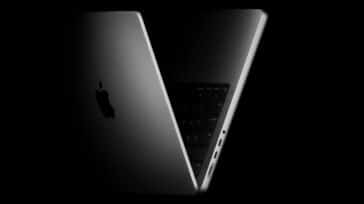
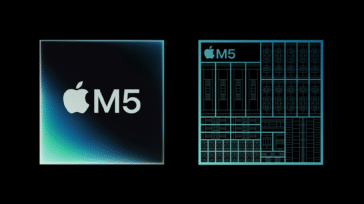


Is the OWC Aura drive compatible with the new MacBook Pro range? http://eshop.macsales.com/shop/SSD/OWC/Aura_Pro_Retina_2012
Or will you have a new product line for this one? I’m going to get the 13″ MacBook Pro and max out the RAM to 16GB (factory as it is not user upgradable) but I would prefer an OWC SSD if you have a compatible one
The new models that Apple has introduced in 2013 use PCIe interface SSD. This is a new interface type that Apple is actually the first to even deploy into computers on this scale. The Aura Pro SSDs for the prior model MacBook Air and Retina laptops are different and not compatible. We do plan to introduce PCIe SSD upgrade options, but with the right controller and that will be a little down the road. Thanks!
I told ya in the rumours roundup;
“Apple has officially eliminated the 15 inch model of the non-Retina MacBook Pro from its lineup. Remaining is only the 13 inch model, leaving it as the only option for those not wanting the more expensive flash storage or those still wanting a built-in optical drive.”
The Mac Mini will probably get upgraded soon. It will be more of a silent upgrade.
The Mac Mini will get a similar motherboard to the MacBook Pro. It will get the i7 Haswell upgrade (which doesn’t make much of a speed difference nor does the higher energy efficiency mean much in the Mac Mini). It will get Thunderbolt 2.
The Mac Mini just doesn’t need much fanfare when it is upgraded. It will simply look the same on the outside.
The lack of a refreshed – or completely new – Thunderbolt Display. USB 3.0 is a necessary update, as is a new form factor to match the iMac’s sleek shape.
Any advice on how to create an OSX Mavericks install disk on a USB?
Bootable USB Mavericks stick (for clean install):
Your 8 GB USB drive should be called Untitled and formatted as Mac OS Extended (Journaled). The installer should be called Install OS X Mavericks.app and should be in your Applications folder.
Run this in terminal:
sudo /Applications/Install\ OS\ X\ Mavericks.app/Contents/Resources/createinstallmedia –volume /Volumes/Untitled –applicationpath /Applications/Install\ OS\ X\ Mavericks.app –nointeraction
You should see something like this:
Erasing Disk: 0%… 10%… 20%… 100%…
Copying installer files to disk…
Copy complete.
Making disk bootable…
Copying boot files…
Copy complete.
Done.
I was disappointed that there was not even a “quiet” refresh of the Mac Mini. I was happy to see the free software, but my current machine is too old to load Mavericks. Making the iPad lighter was a step in the right direction, although it is still heavier than the Kindle Fire HDX, despite Apple’s claims to have the lighest full-sized tablet in the world. Thankfully, the iPad Mini got Retina, because it was lagging behind the other 7-inch tablets from Google, Samsung, and Amazon. I am mystified as to why any product coming out from Apple now, especially the new Air, does not employ ac wireless when the AirPort now uses it as a standard. Apple is now behind even their own technology!
P.S. Your Spam Free WordPress is not working correctly.
Still no updated Mac mini.. :-(
Hardly a surprise when they just increased the price recently due to currency fluctuations. If they were planning on releasing the Mini at the special event they would have waited to increase the price.
The Mac Pro price was about on par with what I expected, but the release date has me wondering what is taking so long. They originally said coming this fall…in theaters and elsewhere. That makes me wonder if this Mac Pro-can is actually ready for prime time.
Also there is still no pricing for the 12 core system, or any option for an nVidia card. Seriously thinking about getting the newest current gen Mac Pro and fitting it with some of your equipment. It’s that or the hackintosh route for me. I just don’t see myself going to the Windows side again.
Overall, it was a fairly boring and ordinary keynote.
Remember that the Mac Pro is going to be “made in the USA”
Depending if that is more than just assembly, it means a lot of complicated factory set up. Not to mention training local factory workers.
Very true and I love that it’s being made in the US. I commend them for doing that. My concern is that it’s going to be a hefty investment to move everything over to the Thunderbolt world and be stuck with a single CPU machine with only RAM that is upgradeable. I think I’ll wait to see some of the Geekbench scores when this thing is officially in the hands of some professionals. Time will tell.
With the likely assumption that the new GPU cards on this new MP will outperform any existing GPU on the current MacPro, that is really the only area that I see that my current MacPro cannot currently compete with.
The faster RAM speed may help to a small extent but it’s being advertised as limited to half the amount the current MacPro supports so those of us that do video editing & large scale photo editing, the new MacPro feels somewhat limited in that regard.
The upgrade to PCIe 3.0 sounds great, and would have been in the current form factor, but the new MacPro seems to do what it can to cripple its potential. e.g. Apple claims the on-board storage of up to 1TB of SSD can get speeds of up to 1.25GB/s.
Why doesn’t OWC point out loudly that those specs from Apple are disappointing!
With 3 OWC PCIe Accelsior SSD boards, running on the older PCIe 2.0 spec., my current MacPro provides speeds in excess of 1.5GB/s – a 3 year old machine in operation already OUTPERFORMING the promise of what will be available sometime in the future with the new Mac Pro.
Yes, in order to get those speeds I have to RAID those 3 Accelsior cards – but I can because I have that expandability that the new Mac Pro lacks.
Just read one of the select professionals rave how via thunderbolt he gets about 480MB/s & its the fastest he’s experienced – clearly he doesnt use OWC gear!!!
OWC gear allows existing Mac Pro owners performance that matches or exceeds that of the new Mac Pro depending on your workflow.
oh, yes b.t.w I have been editing 4k video on my current Mac Pro too – there already exist GPU cards that support 4k video … this is not something you need the new Mac Pro for!
Anyone who RAIDs Accelsiors clearly understands the value of time… in extremely tiny increments! I too enjoy the read/write madness of two Accelsiors (one for booting, the other work). OWC is to be lauded for innovative methods of briskly moving data around on existing Mac Pros. (Mine is a 2010 6-core 3.33 GHz Westmere.) As Matt correctly notes, the specs of the new machine, given what people are doing today already, are a little disappointing, with the exception of the GPUs. It’s odd that, with support for up to three 4K displays, Apple has said nothing about its plans to provide said displays. Matt’s point (and this is totally in sync with OWC’s orientation) is clear: you don’t need the new Mac Pro do get your work done, even if it involves state-of-the-art 4K video editing! ‘Wanting’ it; well, that’s another matter entirely: Apple can generate more lust than Monica Bellucci.